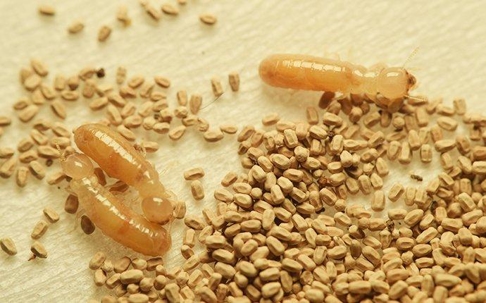Drywood termites seem like they would be the worst wood-destroying pests. Why? Because the wood that makes up homes in our area is typically dry. Drywood termites will eat just about anything, right? That is not entirely true. Today we will be breaking down the facts about drywood termites and offering short and long-term options to deal with these pests in the Bay Area.
Call Bay Pest if you are looking for a fast answer to your property's termite problems. When it comes to pest control in the Bay Area, you will be hard-pressed to find someone more committed to you and your home.
Drywood Termites In The Bay Area: What You Should Look For
Drywood termites are not always easy to identify. Infestations usually start low within the base foundation of a home. Unless you spend a lot of time under your home, you might miss some early signs of infestation. As these pests move upwards, they will become easier to identify. Here are a few signs of termites to check your home for:
- Hollow sounding wood
- Visibly damaged wood that is carved out or honeycombed
- Pin-sized holes in your home’s structural wood
- Frass (termite droppings) around areas of termite damage
- Drywood termite swarmers in or around your home
The last thing you want is to find termites after they have caused extensive damage. Schedule your home for an annual wood-destroying insect report to ensure this doesn't happen. We offer this service at Bay Pest and would happily visit you.
Are These Drywood Termite Droppings?
The most significant difference between drywood termites and subterranean termites, the two most common types of termites in California, is the visible presence of frass. Frass is termite droppings. Subterranean termite frass is mixed with moisture and pressed against the inside tunnels running through structural wood. Drywood termite frass is dry and gets pushed out through ventilation tunnels. If your home has an active infestation, you might notice piles of “sawdust” on the ground near termite damage; this is a clear sign of problems and is an excellent reason to contact a pest control professional.
The Difference Between Drywood And Dampwood Termites
Our area has three kinds of termites: drywood termites, dampwood termites, and subterranean termites.
Drywood termites live inside wood structures and do not require moisture; they avoid these areas and prefer extremely dry and even sun-damaged wood. Dampwood termites also live inside wood structures and need considerable moisture damage to survive. Finally, subterranean termites build their nests underground around structures, need moisture to survive, and look for water-damaged wood and wood-based items to consume. The one thing all of these species have in common is that they will damage your home if given a chance.
Total Termite Control For Homes In The Bay Area
You do not need to pay thousands of dollars annually to prevent termites. There are affordable and effective options available. To find a solution that will meet your need and not break your budget, talk to our professionals at Bay Pest. We will schedule an appointment for your home, identify problems you are having, and implement a treatment strategy to deal with termites effectively. It really is that simple!
Call now and learn more about our effective termite control. We will discuss your options and find a solution that best meets your Bay Area home’s needs.

